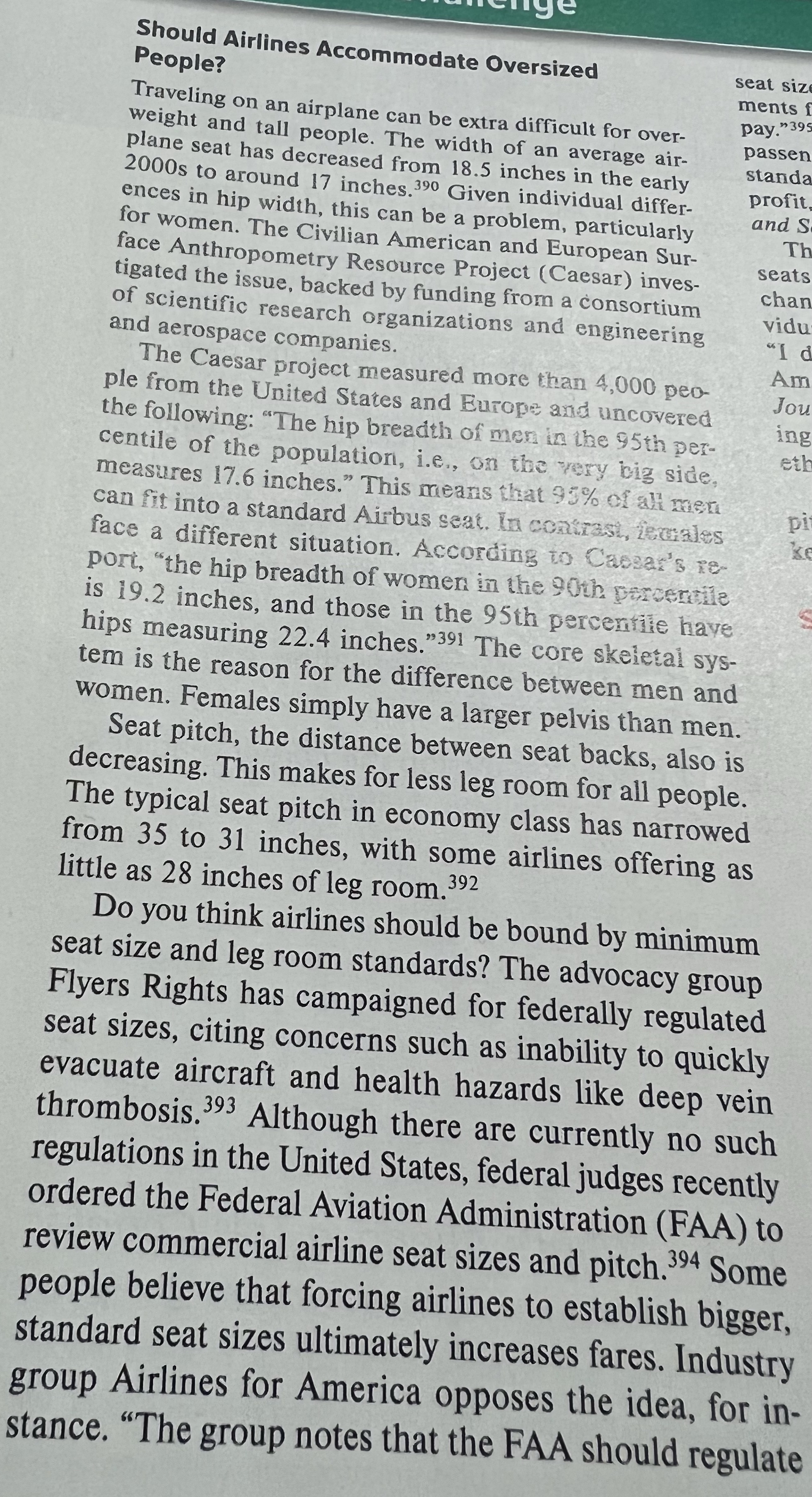Discuss how you would solve the challenge?
Should Airlines Accommodate Oversized People? seat siz ments Traveling on an airplane can be extra difficult for over- pay."395 weight and tall people. The width of an average air- passen plane seat has decreased from 18.5 inches in the early standa 2000s to around 17 inches.390 Given individual differ- profit, ences in hip width, this can be a problem, particularly and S for women. The Civilian American and European Sur- Th face Anthropometry Resource Project (Caesar) inves- seats tigated the issue, backed by funding from a consortium chan of scientific research organizations and engineering vidu " I d and aerospace companies. The Caesar project measured more than 4,000 peo- Am Jou ple from the United States and Europe and uncovered the following: "The hip breadth of men in the 95th per- ing eth centile of the population, i.e., on the very big side, measures 17.6 inches." This means that 95% of all men pi can fit into a standard Airbus seat. In contrast, females ke face a different situation. According to Caesar's re- port, "the hip breadth of women in the 90th percentile is 19.2 inches, and those in the 95th percentile have hips measuring 22.4 inches."39 The core skeletal sys- tem is the reason for the difference between men and women. Females simply have a larger pelvis than men. Seat pitch, the distance between seat backs, also is decreasing. This makes for less leg room for all people. The typical seat pitch in economy class has narrowed from 35 to 31 inches, with some airlines offering as little as 28 inches of leg room. 392 Do you think airlines should be bound by minimum seat size and leg room standards? The advocacy group Flyers Rights has campaigned for federally regulated seat sizes, citing concerns such as inability to quickly evacuate aircraft and health hazards like deep vein thrombosis. Although there are currently no such regulations in the United States, federal judges recently ordered the Federal Aviation Administration (FAA) to review commercial airline seat sizes and pitch. 394 Some people believe that forcing airlines to establish bigger, standard seat sizes ultimately increases fares. Industry group Airlines for America opposes the idea, for in- stance. "The group notes that the FAA should regulate







